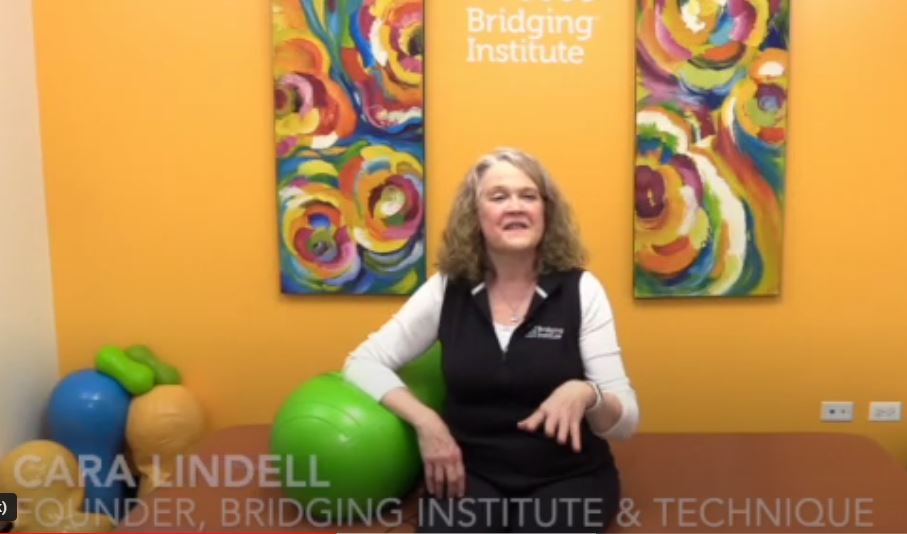Balance and Turning … Kids Can Have Challenges Too! 😳
 The Theme for This Week …
The Theme for This Week …
Recently I wrote about balance being more than standing on one leg, and the challenges of balance in the dark. Keeping steady while turning is one more important aspect of your physical balance abilities.
Turning balance can be as challenging for children as it is for older adults. Continuing with the theme of balance, read on…
How many reasons and ways do we turn during our day?
- Getting out of bed
- Getting out of the car
- Reaching to move dishes or food from one place to another in the kitchen
- Reacting to someone who calls our name
- Reacting to a noise or movement
- Walking a dog who sees a squirrel
If we are active there are so many more opportunities to turn, twist, and pivot in dancing, sports, and yard work.
Losing your balance when turning often results in a collection of injuries — sprained ankles, knees, bumped and bruised hips and shoulders, and sometimes, a broken wrist.
A fall when turning is less jarring than falling forward, but more difficult to recover from given the torques experienced by the body.
Assessing turning balance
Balance when turning is important enough to be measured in standardized balance assessments when evaluating fall risk in adults.
The Fullerton Advanced Balance Test includes 360 Turning balance in its set of 10 skills assessed. Our self-assessment test video (below) is based upon this test.
Balance in children
The skill and speed needed in turning are known to progressively develop in childhood. One study in the UK sought to determine a standard for balance development. The study’s primary outcome found that the balance skills measured did indeed improve with age.
With many of the children we meet at the Bridging® Institute, balance development has been challenged due to early medical or birth events which left the core muscles unable to coordinate completely with the legs and head.
How can Bridging® help? What else can I do?
To target the root cause of why balance may be challenged look to Bridging for help. The muscle relationships of the core, legs and head are reset with Bridging® to allow better coordination and control of the angular momentum involved in turning.
Your balance can also benefit from balance training and exercises involving multi-directional movement. Dance, Tai Chi, and 3D resistance training are some choices available in most communities.
Insight of the Week from Cara
Functional Balance when turning
Long ago when I was first asked to work with children experiencing motor skill challenges, I adapted my expertise related to balance and exercise to help figure out the mystery of these mis-understood children.
I used elements of the Fullerton Advanced Balance Test and was continually surprised at how poorly children performed on specific aspects of balance. The turning balance and a reaching balance were two that were most commonly found to be disorganized.
I designed simple, yet specific exercises for the kids to do for a couple of weeks. It was amazing how much most of the kids changed — not only their balance, but their school behavior, focus, and academics.
This was the foundation for what has become Bridging® today. Here is one example of how we now assess and analyze to solve a balance and behavior challenge.
“But he just needs to sit still!”
When I met Ryan, he was challenging his parents and the team at school. He had a hard time sitting still, paying attention, and following directions. Social skills were inconsistent, yet he did well in sports. A mystery, and a frustration.
What did we find? Looking at all of his early life micromovement disrupters we found he had hernia surgery as an infant. This surgery disrupted all the great coordination of his core, which had developed prior to that.
With a few Bridging® sessions over the span of a few months Ryan transformed into an engaged student. We continue to see him periodically as he grows because the scars on his core still affect muscle relationships until he is finished growing.
How to tell if you (or your child) may have an issue with turning balance?
I created a series of Functional Self-Assessment videos so you can get a sense of how you or your child are doing. There is an overview video, then the individual assessments. And, yes, Bridging® can help reset your balance reactions. See below for more details.
Another Functional Self-Assessment video
Self-Assessment #3 Turning Balance
Often, we get off-balance when someone calls our name and we turn, or we forget something behind us and turn. This transition is one of the most common ways to fall and break a wrist or hip.
Turning and balance control?
This assessment easily lets you test your ability to turn to both the right and left, and your ability to turn efficiently or quickly.
What do the results tell me?
There are two levels of insights to this assessment. Are you able to easily turn around, and, are you able to turn equally to each side? If not, you can incorporate rotational exercise to help, and practice agility with foot work exercises. When you have balance challenge turning in only one direction, this lets you know that you need to be careful reaching or turning to that side. Awareness can keep you safe!
The Functional Self-Assessment video series allows you to get a sense of how you’re doing related to discrete aspects of functional balance and strength. In each video, there is an explanation of why the functional skill is relevant. There are five FREE self-assessments in the YouTube video series.
Each assessment is based upon a clinical assessment sub-test which has formal directions, measurement, and interpretation. The usage shown is consistent with, but not as detailed as the clinical assessment. You can use the results for your own insight.
How to use the videos?
Do each test, and periodically repeat. Just like measuring your weight or BP, you will have a record of your normal. You will be able to objectively tell when a change happens.
Example:
If you recently tripped and fell, you look fine, but feel unsteady. Having a baseline for comparison is helpful, so you can understand if balance reactions were impacted.
If your results indicate an area of concern, what next?
Depending upon your overall healthcare situation, you may want to ask your physician for a Physical Therapy evaluation and exercises. When balance exercises are impractical or ineffective, Bridging® can provide insights on ‘why’ your balance reactions are off, and address the cause.

